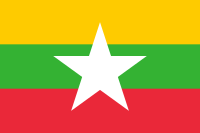
Photo from wikipedia
Background: In populations with a high prevalence of glucose-6-phosphate dehydrogenase deficiency, practices that can induce haemolysis need to be identified to raise awareness of preventable risks. The aim of this… Click to show full abstract
Background: In populations with a high prevalence of glucose-6-phosphate dehydrogenase deficiency, practices that can induce haemolysis need to be identified to raise awareness of preventable risks. The aim of this survey was to determine the proportion of prospective mothers using haemolytic agents and their knowledge and practice surrounding neonatal jaundice. Methods: Pregnant mothers were invited to participate in a cross-sectional survey conducted at Shoklo Malaria Research Unit on the Thailand–Myanmar border. Results: From 12 April 2015 to 12 June 2015, 522 pregnant women completed the survey. Mothball use in the household was reported by 41.4% (216 of 522) of prospective mothers and menthol containing products on baby skin by 46.7% (244 of 522). Conclusion: Just over 40% of the households reported use of naphthalene-containing mothballs. Future health promotion activities that focus on reducing naphthalene mothball and menthol-containing products use have the potential to reduce rates of severe neonatal jaundice in this population.
Journal Title: Journal of Tropical Pediatrics
Year Published: 2017
Link to full text (if available)
Share on Social Media: Sign Up to like & get
recommendations!